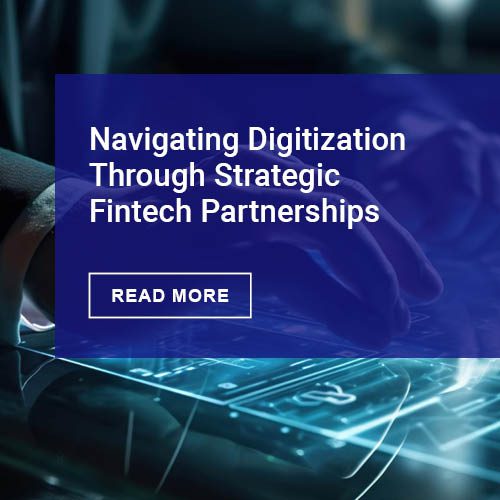Financial industry CEOs know that failure to adopt the right strategy can result in their organization becoming irrelevant. These concerns are shared by the CFO, facilities and retail teams, and those in the boardroom. While we’re seeing a retail revolution in branch banking, the customer-facing aspects of branches are actually just the tip of the iceberg. Branches have always been subject to tight partitioning between front and back of house for security reasons, but today’s platforms represent a quite different dichotomy.
The old barriers are gone. The new divide lies in the advanced banking technology that is steadily making life easier for both branch staff and customers alike. On the customer side there are enhanced experiences like check capture and deeper engagement with universal bankers. On the institution side there’s a labyrinth of computer logic, hardware design, and retail strategies to navigate. Determining the correct strategy and equipment requires a high degree of expertise.
A major hurdle in the race to automate processes is business core integration. Banking technology vendors are constantly being pressured by financial institutions to develop better and easier core integration capabilities. Core integration is the new grail for advanced terminal applications—as it replaces less robust setups while automating and standardizing numerous branch network procedures.
Confronted by different versions of what appear to be the same technology (different makes and models of cash recycler, advanced terminal, etc.) decision makers are justifiably mystified when trying to select the appropriate equipment for their branches. The important thing to remember is that technology should never dictate the game plan; instead, financial industry CEOs can succeed by prioritizing strategy and then determining which technologies best serve that strategy.
Branch transformation consultants make these decisions much easier and objectively. They ask questions from an operational standpoint: Does it make sense based on what the retail vision is? What are customers/members doing? They evaluate pricing and connect it back to strategy to predict the savings financial institutions should expect by implementing different kinds of equipment. This overlaps into the CFO’s territory, where considerations like hurdle rate, ROI and payback are calculated.
Sandy Dixon of Sandy Dixon and Associates states, “You have to ‘go to the gemba’—to use a lean business expression. This means going directly to the front line and looking at what the processes are. You must encourage process improvement by asking the right questions. Are your people and processes in alliance? Is your technology supporting the mission? Improvement can only be achieved when both technology and process improvements are the focus. You have to understand how everything works holistically.”
Gemba is a Japanese expression denoting “the real place”. The gemba of a retail branch in the financial industry would be the interface between the institution’s people, technology, processes, and its customers.
Dixon calls the time spent studying how an organization’s processes work the Discovery Phase. This phase serves to assess and/or validate the FI’s retail strategy. Retail validation can uncover huge inefficiencies which must be addressed in order to effectively transform the branch. Dixon likes to enter her clients’ branches incognito. “I go in as a customer to see what the experience is like. That way I can observe whether or not someone greets me when I come through the door and how my needs are addressed. Working with the branch staff, I can then determine firsthand any shortcomings. I discover the true experience.”
This type of on-the-ground diligence in addition to several other analyses is helpful in determining what is and isn’t working in your branches, in addition to several other analyses. It is of utmost importance to create a branch transformation roadmap that details each step of the journey. Within this roadmap, there may be discrete product-specific decisions required that pertain to certain elements in the branch.
Branch Transformation Roadmap
Creating a roadmap enables an organization to perform a controlled, incremental roll-out.
The first step on the journey is the Transaction Audit. During the Transaction Audit, transaction data from every branch in the network are coalesced and compared by distribution channel. Determinations are then made—based on percent shift predictions from manual teller line transactions to automated transactions of which branch distribution channels can be more efficient. Automated processes are the most effective way to make network operations easier. Efficiency can be gained that streamlines front end interactions as much as possible. Any elimination of processing is a sought-after option for banks and credit unions. Products that fully automate procedures and are easy to integrate are considered vastly superior.
Transaction audit data shows expected numbers of transactions per day at various migration rates (20%, 30%, 50%, etc.) away from the teller line to ATM’s, or advanced terminals. These numbers serve as goals that drive the effort forward.
A consultant can define each branch process across an entire network. They examine the sequence of steps followed by high performing branches, and compare them to low performing branches to uncover significant procedural differences between branches. It’s also possible that high performing branches still have potential for marked process improvement.
Internal Processes and Change Management
The intangibles that really drive success are the responsibility of the financial institution. Most of the internal educational initiatives aren’t provided by vendors; vendors usually provide training support on the technology itself. Branch transformation specialists or technology partners are required if organizations are to achieve the highest migration rates based on transaction audit data.
Organizations undergoing dramatic change should encourage formation of a group designated to look at future innovation. This group would examine all the options for products, services, and technology. A committee for process simplification should also be considered, to work out oversights, impasses, etc., that can prove very costly if discovered too late in the project. There are other considerations relating to staff training, marketing, policies and customer education that need to be addressed internally for a transformation to succeed in the long term.
Success in the long term brings us back to the subject of core integration. It’s a fact that the better quality equipment and branch network operations are supported by full core integration. But integrating an advanced terminal may require workarounds, or middleware patches; legacy systems can be problematic, and may not always be ready to “talk” to newly integrated banking equipment. Financial institutions typically don’t have the degree of expertise as vendors, so vendors try to certify equipment with the provider the financial institution uses. The key is to work as a team with the financial institution being the coach and the quarterback, bringing all parties to the huddle to work through problems determine resolution, and develop a plan for execution.
Dixon understands that successfully transforming the branch requires a holistic approach. “I review over 20 different elements—not only at the branch level but delivery and support channels as a whole—that impact the transformation. The connectivity of these elements helps me design the roadmap for a financial institution in search of a better customer/member experience. I’m always amazed at what I find. Some things only require a slight tweaking while others may result in a strategic shift. One thing I know from having actually done this work as a banker, missed steps and wrong turns are common and costly. There are no cookie cutter solutions. My goal is to provide a roadmap to simplify the transformational process saving financial institutions time and money.”
Reviewing 20 elements may seem daunting to a team that has never done it before. Branch transformation experts, on the other hand, have refined their methods for diagnosing problems over many years. A transformation culture is something that they can help you create, but to do it successfully you need your organization’s top level people driving the effort. CEOs may not be confident that their retail team can bring the organization to where it needs to be, and an experienced consultant can bridge that gap while training the team in the latest retail practices.
Mark Charette is the CEO of Solidus, a New England company specializing in custom branch design and construction.











